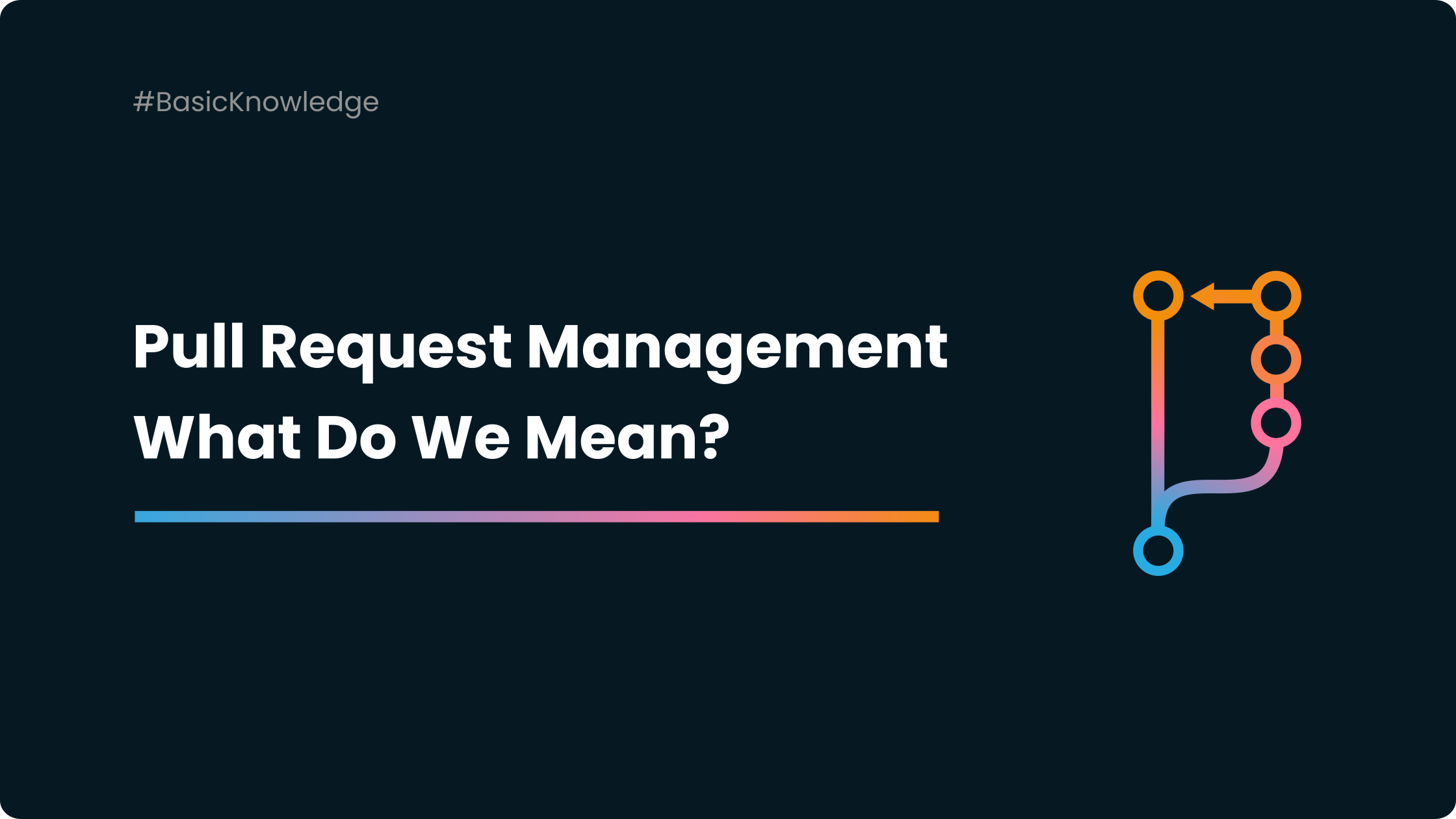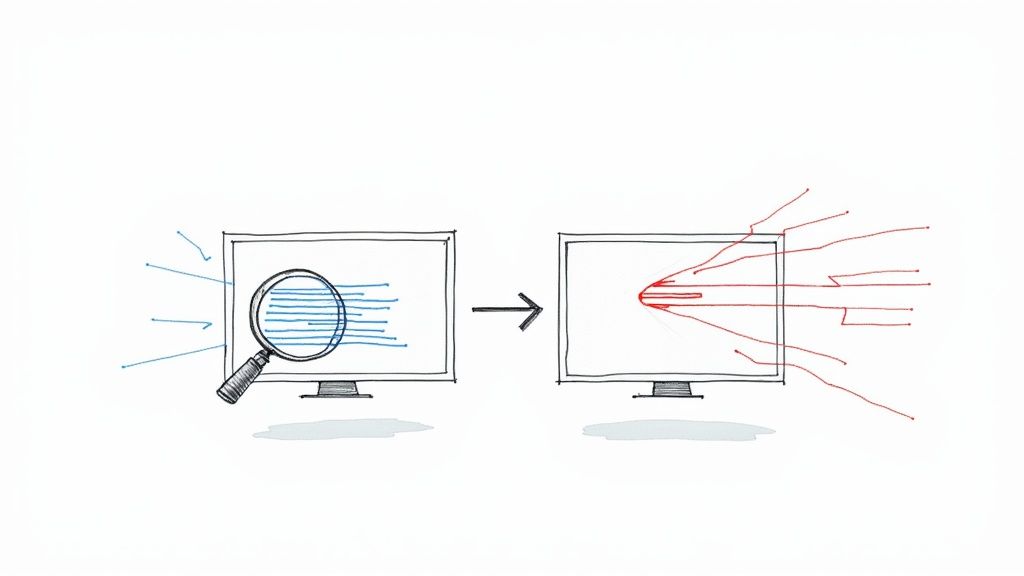Pull Request Management - What Do We Mean?

Development teams collaborating on a project may make changes to the code frequently. However, managing those changes is necessary to avoid errors or bugs in the code, which often confuses the developers. One way to do this is through pull requests. So what is a pull request?
Developers using Git Systems like GitHub or GitLab use pull requests to integrate new changes in the code into the main project repository. The repository on Git is where the code, other project information, and sometimes data exists.
Pull requests on Git Systems are typically kept separate from the main project. It is a different platform for developers to discuss changes, bugs, and any other issues or ideas about the code. Someone heading the DevOps team manages the repository and oversees the pull requests.
This article discusses managing pull requests and how automating the process can streamline project changes and improvements.
Understanding Pull Request Management
The repository manager, or any team member with the necessary permissions, reviews the code updates. Developers initiate the pull request, and the new code is only merged with the main repository upon approval.

Without pull requests, buggy code could merge with the main repository, causing issues in the product and impacting the user experience. Here's how pull requests work:
- The developer creates a fork of the main repository and moves it to their computer.
- The developer adds new code or changes the existing one (to add a new feature or fix bugs).
- Once the developer has tested the changes, they push them into the fork of the respiratory they had created earlier.
- At this point, the developer initiates a pull request to merge the fork with the repository.
- The repository maintainer reviews the fork code and may request more edits, or if no corrections are needed, the forked repository is merged with the main repository.
Creating pull requests is easy, but the actual process may vary from team to team. Many teams use templates to ensure the pull requests are consistent.
When a developer begins a pull request, they do so with a draft featuring a title and short description. The title and description help the maintainer identify and understand the code changes before they can review them.
The Importance of Pull Request Management
Pull requests management is essentially change management that helps developers and managers/maintainers implement new features or fix issues in a streamlined fashion. Here's why DevOps teams use pull requests:
- Enhancing Team Collaboration: Pull requests are based on collaboration, as they encourage team members and leaders to give feedback and discuss solutions. This results in better communication and more transparency within the team.
- Speeding Up Development: Manually implementing code changes can be tedious and time-consuming. With pull requests, continuous integration (CI) becomes easy, and development moves fast.
- Elevating Code Quality: Merging new code that's not been adequately tested and reviewed risks creating new bugs. Pull requests allow developers to test not just the new code but the code's functioning in the main repository. That way, the code's integrity is maintained.
- Improving Code Review: Pull requests allow managers or maintainers to oversee the team's changes. Your team may have several developers working on different parts of the code, and one's work may affect the others. So pull request management makes it easier to review code changes more comprehensively.
Best Practices for Effective Pull Request Management

While pull requests are supposed to make development smooth, sometimes, they can do the opposite. It's essential to follow the tried and tested practices for better pull request management:
- Clear and Consistent Descriptions: Make sure the title and description of the pull request are clear. Poor naming and incomplete descriptions make it harder for the reviewer to understand the code changes, and they take longer.
- Robust Code Review: For repository maintainers, reviewing the new code and its place in the existing code is essential. When merged with the repository, poorly reviewed code can create new bugs that cause further delays in the rollout of changes.
- Regular Communication: Pull requests facilitate communication and collaboration between team members and their leaders. That said, there can be long pauses between responses on GitHub. Direct contact, like face-to-face or through collaboration/communication platforms, should be used to give and receive feedback quickly.
- Thorough Documentation and Labeling: Each pull request and its implementation change should be appropriately documented. This ensures ease for any developer making changes or adding new code. It also increases traceability and accountability for code changes.
Go Further: Automated Tools and Services
As you understand, managing pull requests effectively is crucial for maintaining code quality, promoting collaboration, and streamlining the development process.
By utilizing automated tools such as Mergify, teams can further enhance their pull request management practices. Computerized tools like Mergify offer a range of solutions automating your pull request management, such as Workflow Automation and the Merge Queue.
These tools help ensure that pull requests are correctly reviewed, tested, and integrated into the main repository, minimizing the risk of introducing bugs or errors. With automated tools like Mergify, development teams can optimize their workflow, enhance code quality, and achieve greater efficiency in managing pull requests.
Conclusion
Now that you know what a pull request is and how it works, you can adopt the best practices and use them to make development faster and better. It makes implementing code changes more straightforward and safer and enhances collaboration.
However, managing pull requests can quickly become overwhelming for the DevOps team. Mergify merges code faster with Merge Queue and Workflow Automation by automating pull request management. Sorting, updating, and queuing pull requests automate, accelerate and secure the test and merge process, as you can read in Contra Case Study.
Pull requests are more straightforward with Mergify. Ready to get started? Sign up for your free plan today.





